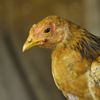Proposals to reduce wild-animal suffering often center around changes to animal ecosystem dynamics: eliminating predators (e.g., housecats, lions, wolves), sterilizing prey (e.g., deer, gazelles, mosquitoes), or otherwise tweaking with particular species.
There's definitely room for improvement here: For example, shifting from r-selected to K-selected ecosystems means a bigger fraction of the energy consumed in that ecosystem goes toward fewer, longer-lived animals that have lower infant mortality.
However, I wonder if animal-focused interventions don't strike at the root of the problem enough. In particular, as a general principle, it seems like where there's food, there's life. So wouldn't a natural idea be to reduce the amount of food, i.e., prevent plants from converting sunlight into edible energy? If the food is produced, eventually someone will eat it, unless it's burned or decomposed by bacteria.
One simple way to reduce plant mass is through land-use changes: e.g., paving hell and putting up a parking lot. This prevents plants from photosynthesizing on that land for decades into the future. There are other activities humans do that have bigger effects in this direction. Preventing climate change might be important to avoid the increases in biomass production that are expected to result therefrom.
Plants seem like an obvious growth-limiting factor for animal populations in the long run. Are there others that could be tweaked? Maybe water availability, nutrients, climate? But it seems like these should mostly matter through their effects on plant growth.
In aquatic ecosystems, dissolved oxygen may be a limiting factor, and eutrophication may actually make deep lakes anoxic. So it's possible that in this case, more biomass doesn't mean more life, unless there are massive numbers of very tiny but possibly sentient creatures that can survive anoxic conditions? At least on land, though, it seems pretty clear that more plants imply more animals.
There's definitely room for improvement here: For example, shifting from r-selected to K-selected ecosystems means a bigger fraction of the energy consumed in that ecosystem goes toward fewer, longer-lived animals that have lower infant mortality.
However, I wonder if animal-focused interventions don't strike at the root of the problem enough. In particular, as a general principle, it seems like where there's food, there's life. So wouldn't a natural idea be to reduce the amount of food, i.e., prevent plants from converting sunlight into edible energy? If the food is produced, eventually someone will eat it, unless it's burned or decomposed by bacteria.
One simple way to reduce plant mass is through land-use changes: e.g., paving hell and putting up a parking lot. This prevents plants from photosynthesizing on that land for decades into the future. There are other activities humans do that have bigger effects in this direction. Preventing climate change might be important to avoid the increases in biomass production that are expected to result therefrom.
Plants seem like an obvious growth-limiting factor for animal populations in the long run. Are there others that could be tweaked? Maybe water availability, nutrients, climate? But it seems like these should mostly matter through their effects on plant growth.
In aquatic ecosystems, dissolved oxygen may be a limiting factor, and eutrophication may actually make deep lakes anoxic. So it's possible that in this case, more biomass doesn't mean more life, unless there are massive numbers of very tiny but possibly sentient creatures that can survive anoxic conditions? At least on land, though, it seems pretty clear that more plants imply more animals.


